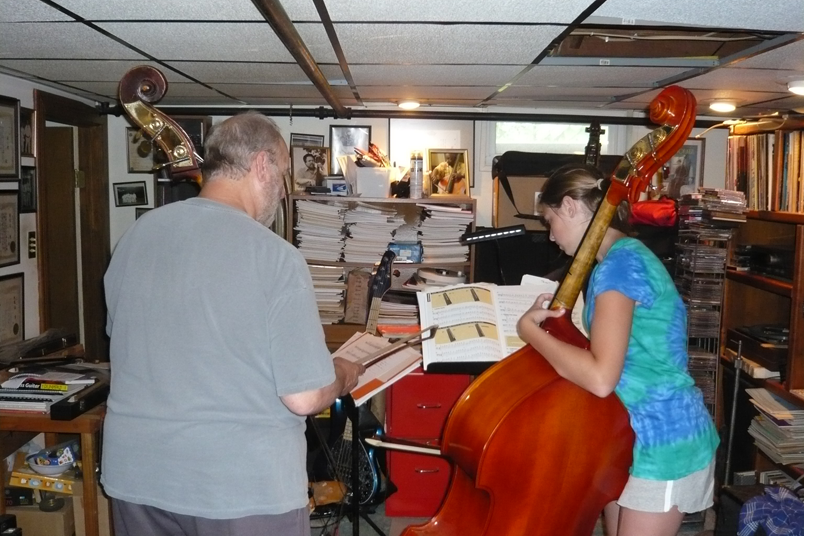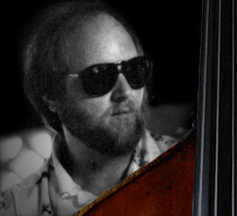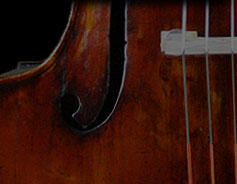Jazz Bass (Electric Bass)
 I. Objective- To provide students with the technical and theoretical knowledge of the electric bass and function in the genres of contemporary music.
I. Objective- To provide students with the technical and theoretical knowledge of the electric bass and function in the genres of contemporary music.
Technique: Proper right and left hand position and posture. The student must know and execute two (2) octave scales (major, relative minor, harmonic minor, melodic minor, modes of the major scale), and know the fingerboard (location of the notes on the bass). In order to gain technical proficiency the scale exercises will be performed with the aid of a metronome set at increasing tempos as the student progresses.
Sight Reading: Knowledge of the bass clef and rhythmic notation. Knowledge of the bass clef is performed first without the instrument, having the student recite aloud the notes of a bass line with the aid of a metronome. The instrument is then added; we begin with quarter notes and move to eighth, triplet and sixteenth note patterns. I provide rhythm sheets, which have a rhythm at the top of the page and chord symbols following. The student fills in the sheet with chord notes (as the student progresses he/she will use scale notes) using the assigned rhythm. At the next lesson the student is expected to play the assigned exercise. The student is also expected to read an exercise that I provide with the rhythm of that lesson.
Bass Line Construction: After the student has gained the technique and knowledge of the various scales we will begin with constructing bass lines. We will study the relationship of scales and chords and how to build chords from scales. We will study major and minor triads, major seventh, minor seventh, dominant seventh, diminished seventh and half diminished chords. By using triads, seventh chords, scales and chromatics the student will be able to improvise a bass line from a lead sheet.
Improvisation: In addition to improvising a bass line the student is encouraged to improvise a solo. I assign a song and the student first plays the melody then a bass line and finally improvises a solo. Improvisation involves a thorough knowledge of scales, chords, arpeggios and melodic techniques (rhythm, phrasing, motifs, voice leading, etc.). We will also work on ear training and transcribing bass lines and solos from recordings.
-
Perform: The student is also encouraged to perform in jazz band, jam session, rock bands, stage shows, etc.
I currently use the book "Jazz Workshop for Bass and Drums" written by Dave Weigert which covers most styles of jazz. We may also use a sight reading and/or
other books. Oh and we'll have FUN....
This Jazz Bass course can also be used with the double bass student but it is recommended that the students is already familiar with the bass fingering system and the finger board up to the 7th position. It would be most beneficial for the student to first complete the Classical Bass Course.
Who Benefits from the Jazz Bass Course?
-
Audition preparation for High School Jazz Band
-
Audition preparation for District and State Jazz Band
-
Audition preparation for College Admissions
-
Playing better bass lines in any style of music
-
Playing better bass solos
-
Retired people who always wanted to play bass
-
Professional musicians looking to increase their knowledge of the bass
-
Other instrumentalist wanting to add bass to their list of instruments
-
Guidance: musically and being a good human being
Note: Students seeking help with auditions should begin lessons approximately one year prior to the audition date
For contact info see the Contact Page
Classical Bass Study
 For most students I recommend and teach from the book "F. Simandl New Method for Double Bass" by Franz Simandl. This method has been taught and is still being taught at most major colleges and universities. Some of my middle school students use the "Essential Technique 2000" or other elementary method books which are used in their school music program and are fine for young beginners. In addition to the Simandl, and other, methods we will concentrate on sound production, proper bow grip and position, posture and intonation. We will also work on the Simandl etudes, bowing and cross string exercises, parts of Baroque Sonatas, orchestral etudes and other repertoire. Below is a more detailed outline.
For most students I recommend and teach from the book "F. Simandl New Method for Double Bass" by Franz Simandl. This method has been taught and is still being taught at most major colleges and universities. Some of my middle school students use the "Essential Technique 2000" or other elementary method books which are used in their school music program and are fine for young beginners. In addition to the Simandl, and other, methods we will concentrate on sound production, proper bow grip and position, posture and intonation. We will also work on the Simandl etudes, bowing and cross string exercises, parts of Baroque Sonatas, orchestral etudes and other repertoire. Below is a more detailed outline.
I. Objective- To provide students with the technical and theoretical knowledge of the string bass (double bass) and its function in various musical styles.
Technique: Correct posture, stance, right and left hand, wrist, elbow, shoulder position and instrument position.
Beginning and intermediate students will be required to purchase and use the book Simandl, New Method Part I (Essential Technique 2000 or other method books taught in the middle/high school music program) as well as warm up, bowing and cross string exercise sheets that I provide. In addition students are encouraged to purchase and use Simandl 30 Etudes, A Contemporary Concept of Bowing Techniques for the Double Bass by Frederick Zimmermann and/or Sevcik For Double Bass by Abraham Luboff.
Advanced students will be required to purchase and use the book(s) Simandl, New Method Part II and/or Dr. Arthur Davis System for Double Bass. There will also be etudes and solo literature that will be part of the lesson.
NOTE: All exercises will be performed with the aid of a metronome
Technique/Musicianship: Intonation (playing in tune), sound production, rhythmic accuracy and interpretation will be stressed at all times. Major and minor scales and arpeggios will be played two octaves at various tempi with the aid of the metronome.
Repertoire: Students will work on the solo literature written or transcribed for the double bass as well as orchestral parts, method books and jazz. (for jazz bass lines and improvisation see electric bass syllabus)
Ensembles: Students are encouraged to participate in the orchestra, jazz ensembles and recitals.
Listening: Students are encouraged to attend recitals, concerts and listen to recordings of all styles of music.
Who Benefits from the Classical Bass Course?
-
Audition preparation for High School Orchestra
-
Audition preparation for District and State Orchestra
-
Audition preparation for College Admissions
-
Retired people who always wanted to play bass
-
Guidance: musically and being a good human being
Note: Students seeking help with auditions should begin lessons approximately one year prior to the audition date

